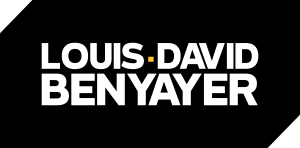Creative processes have been traditionally highly intuition-based, leaving little room for data analysis. However, this changed with the digital transformation of creative industry and companies in this industry made their creative decision process more evidence-based, while retaining the best features of artistic intuition and human creativity. How did this transformation happen? How to leverage the best of the two worlds, the data-driven one and the intuition-driven one?
In their research, Tam, Hallikained and Tim analyse the case of Rovio to formulate 5 principles of creative analytics, which they define as “the balanced fusion between artistic intuition and analytics-based evidence to inform/evaluate or inspire creative decisions.”
Creative organisations special features
As described by the authors, companies in the creative industries are special because they embed contrasting logics of aesthetics and creativity versus efficiency and business. As they operate on markets and look for seducing clients, products should be creative enough to spur interest and familiar enough to be accepted. Finding this balance between art and business is the major key success factor of companies in this industry and has mainly been achieved through individual and collective innovation and creativity capabilities which relied on individual traits and organisational settings for developing them, little room was available for data analysis in finding this balance.
According to the authors, two evolutions made the use of analytics more accepted and relevant in creative industries. First, “digitalization of creative industries brings arts and engineering culture close together.” Developing a video game on a mobile application is both a creative and engineering challenge and the two logics are intertwined. Second, the methods to develop and market digital products are iterative and the products change and evolve after they are launched taking into consideration users’ feedback and behaviour. This iterative process thrives on data analysis and data-driven insights are leveraged to orient evolutions of products.
Rovio’s transformation
Rovio is a perfect example of this evolution and transformed from an intuition-driven creative organisation to an analytics-driven one. The company started selling premium video games and moved to sell free-to-play (F2P) mobile phone video games with great success (for example the Angry Birds franchise).
“In contrast to premium games, where the customers make their purchase decision upfront based on their expected experience, in F2P customers have the freedom to adjust their purchase decisions based on their actual experience. Therefore, developing successful F2P games requires a deep and fine-grained understanding of customer behaviour and preferences as well as the ability to align design decisions with these. The game is continuously refined following market introduction, turning it more into an evolving service than a finished product. This evolving nature of F2P games also makes it possible to evaluate and adjust creative decisions, with an evidence-based approach to such decisions becoming critical to success.”
In this transformation, analytics were used at several moments of the creative process and an evidence-based approach became part of the creative decisions and process (ideation, prototyping, production and launch). The role of analytics has been to challenge assumptions and enable evidence-based creative experimentations, not to silence creative voices.
5 principles to retain artistic strengths and enhance the creative process with analytics
In their analysis of Rovio’s transformation, the authors describe 5 principles which explain how the company leveraged both intuition and evidence during the creative process.
- Build shared analytics values but provide tailored business analytics support. As artists and engineers have very different ways of working, sharing a common vision about the value and interest of analytics helps; as well as providing easy access to analytics tools and teams to the artists for bespoke needs.
- Build hybrid teams. Collaboration between analysts and creative teams enables to embedding of efficient analytics in the creative decision processes. This collaboration helps each side understand better each other needs and constraints and fosters creative decision-making.
- Balance creative and commercial goals. This requires simultaneously and artistically-savvy approach to commercial decisions and a commercially-savvy approach to artistic decisions. One risk is to shift the focus to short-term financial benefits and miss novel concepts or ideas. The other risk is using too many resources for ideas or projects not financially viable.
- Encourage creative experimentation and learning. Analytical insights can prove to be an efficient mechanism for identifying the impact of creative choices and improving them when creative experimentations are tested frequently. This requires adopting an iterative process and mindset and to access easily to data to evaluate creative decisions embodied by the experiments.
- Make data-inspired, not data-driven, creative decisions. During the ideation phase, intuition is more often used coupled with artistic freedom and risk-taking. Then, during prototyping, analytics are used to test creative propositions and orient experiments. In addition, while analytics can provide very relevant answers to what is happening, they usually fail at explaining why it’s happening. This interpretation is critical and requires human expertise.
The creative organisations have very specific features and the principles listed above don’t naturally apply in all contexts. However, in the current conversation we are having about the combination of human talents and AI systems, these 5 principles are useful guidelines for any company engaging in an analytics transformation.
Photo de Dynamic Wang sur Unsplash

